一、链表基础知识
链表是一种通过指针串联在一起的线性结构,每一个节点由两部分组成,一个是数据域一个是指针域(存放指向下一个节点的指针),最后一个节点的指针域指向null(空指针的意思)。
单链表

双链表

循环链表
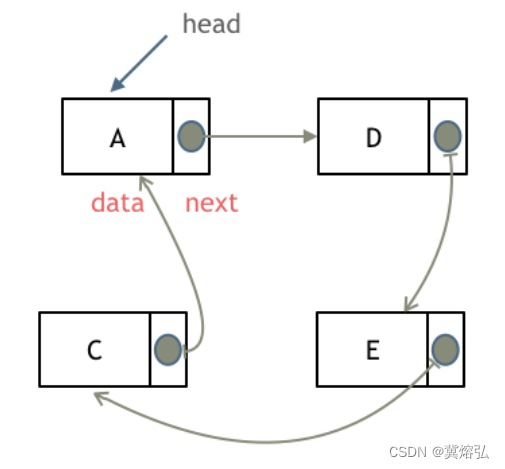
存储方式
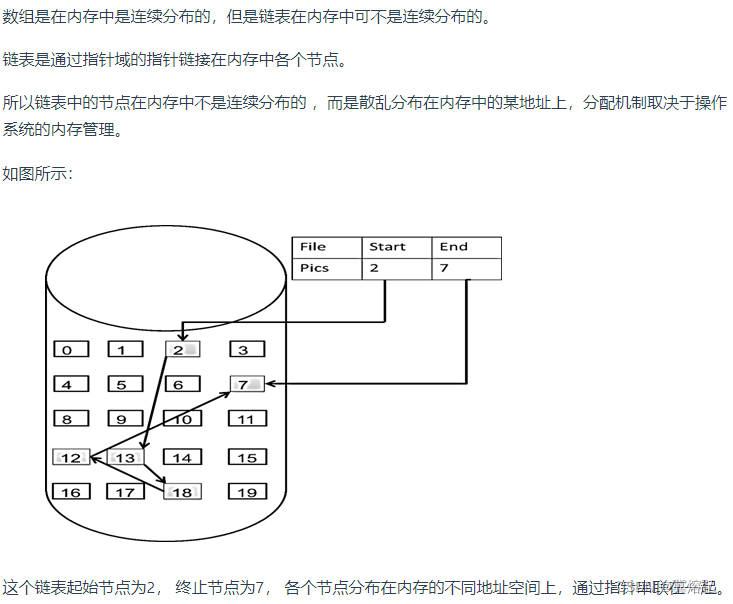
链表的定义

删除节点和添加节点
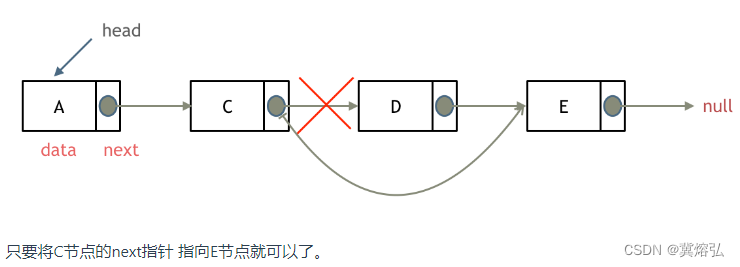
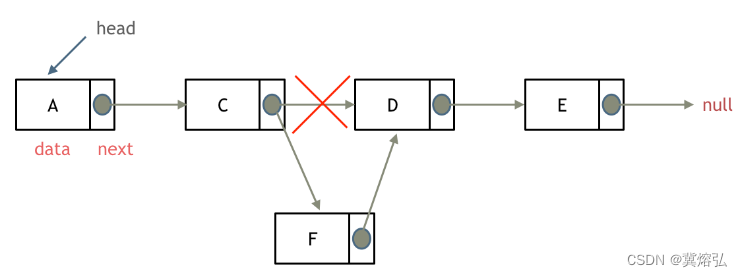
与数组的区别
数组在定义的时候,长度就是固定的,如果想改动数组的长度,就需要重新定义一个新的数组。
链表的长度可以是不固定的,并且可以动态增删, 适合数据量不固定,频繁增删,较少查询的场景。
二、203.移除链表元素
首先要注意while和if到底用哪个要分清:
while()是一个循环,直到条件不满足,才退出while代码块的范围;if()只执行一次,成立进入,运行完后直接执行if之后的代码,不会再进入if代码的范围。
使用虚拟头节点的方式,使每步移除链表元素的操作都相同,否则,如果要移除第一个链表元素,需要写成不一样的形式
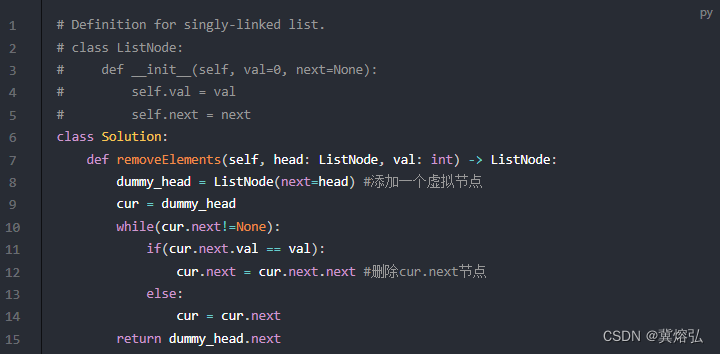
三、707设计链表
注1:current next 才是我们要操作的第n个点
注2:插入新节点,进行指针指向操作的时候,先指向后面的节点,再指向前面的节点(否则,先指向前面的节点的话,current_next就变成这个新插入的节点了,不是原来的current_next了)
# 单链表
class Node:
def __init__(self, val):
self.val = val
self.next = None
class MyLinkedList:
def __init__(self):
self._head = Node(0) # 虚拟头部节点
self._count = 0 # 添加的节点数
def get(self, index: int) -> int:
"""
Get the value of the index-th node in the linked list. If the index is invalid, return -1.
"""
if 0 <= index < self._count:
node = self._head
for _ in range(index + 1):
node = node.next
return node.val
else:
return -1
def addAtHead(self, val: int) -> None:
"""
Add a node of value val before the first element of the linked list. After the insertion, the new node will be the first node of the linked list.
"""
self.addAtIndex(0, val)
def addAtTail(self, val: int) -> None:
"""
Append a node of value val to the last element of the linked list.
"""
self.addAtIndex(self._count, val)
def addAtIndex(self, index: int, val: int) -> None:
"""
Add a node of value val before the index-th node in the linked list. If index equals to the length of linked list, the node will be appended to the end of linked list. If index is greater than the length, the node will not be inserted.
"""
if index < 0:
index = 0
elif index > self._count:
return
# 计数累加
self._count += 1
add_node = Node(val)
prev_node, current_node = None, self._head
for _ in range(index + 1):
prev_node, current_node = current_node, current_node.next
else:
prev_node.next, add_node.next = add_node, current_node
def deleteAtIndex(self, index: int) -> None:
"""
Delete the index-th node in the linked list, if the index is valid.
"""
if 0 <= index < self._count:
# 计数-1
self._count -= 1
prev_node, current_node = None, self._head
for _ in range(index + 1):
prev_node, current_node = current_node, current_node.next
else:
prev_node.next, current_node.next = current_node.next, None
# 双链表
# 相对于单链表, Node新增了prev属性
class Node:
def __init__(self, val):
self.val = val
self.prev = None
self.next = None
class MyLinkedList:
def __init__(self):
self._head, self._tail = Node(0), Node(0) # 虚拟节点
self._head.next, self._tail.prev = self._tail, self._head
self._count = 0 # 添加的节点数
def _get_node(self, index: int) -> Node:
# 当index小于_count//2时, 使用_head查找更快, 反之_tail更快
if index >= self._count // 2:
# 使用prev往前找
node = self._tail
for _ in range(self._count - index):
node = node.prev
else:
# 使用next往后找
node = self._head
for _ in range(index + 1):
node = node.next
return node
def get(self, index: int) -> int:
"""
Get the value of the index-th node in the linked list. If the index is invalid, return -1.
"""
if 0 <= index < self._count:
node = self._get_node(index)
return node.val
else:
return -1
def addAtHead(self, val: int) -> None:
"""
Add a node of value val before the first element of the linked list. After the insertion, the new node will be the first node of the linked list.
"""
self._update(self._head, self._head.next, val)
def addAtTail(self, val: int) -> None:
"""
Append a node of value val to the last element of the linked list.
"""
self._update(self._tail.prev, self._tail, val)
def addAtIndex(self, index: int, val: int) -> None:
"""
Add a node of value val before the index-th node in the linked list. If index equals to the length of linked list, the node will be appended to the end of linked list. If index is greater than the length, the node will not be inserted.
"""
if index < 0:
index = 0
elif index > self._count:
return
node = self._get_node(index)
self._update(node.prev, node, val)
def _update(self, prev: Node, next: Node, val: int) -> None:
"""
更新节点
:param prev: 相对于更新的前一个节点
:param next: 相对于更新的后一个节点
:param val: 要添加的节点值
"""
# 计数累加
self._count += 1
node = Node(val)
prev.next, next.prev = node, node
node.prev, node.next = prev, next
def deleteAtIndex(self, index: int) -> None:
"""
Delete the index-th node in the linked list, if the index is valid.
"""
if 0 <= index < self._count:
node = self._get_node(index)
# 计数-1
self._count -= 1
node.prev.next, node.next.prev = node.next, node.prev
四、206反转链表
重点是要用temp暂存current_next,否则无法反转,思路整理:

双指针法(这个好理解,用这个!)
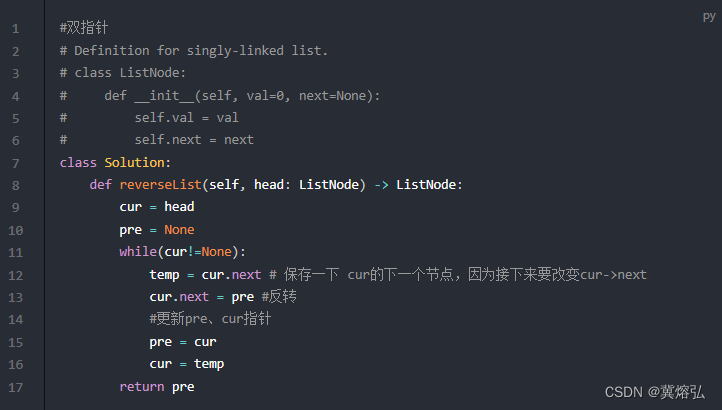
递归法(稍微有点难,等二刷的时候再看)























 610
610











 被折叠的 条评论
为什么被折叠?
被折叠的 条评论
为什么被折叠?








